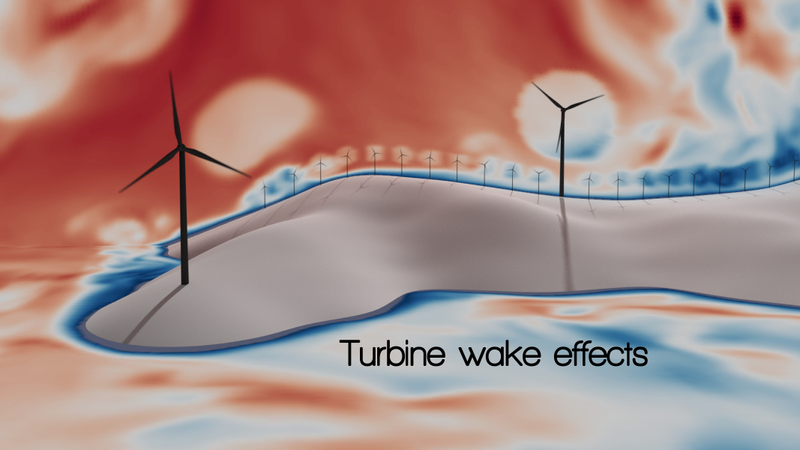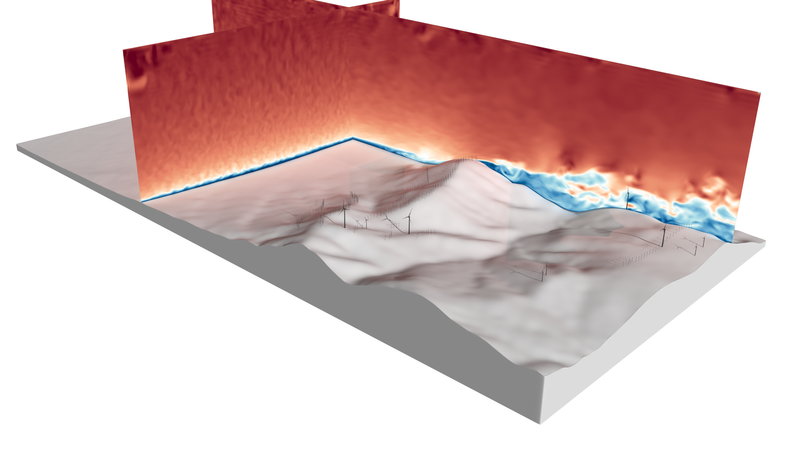Finding optimal wind turbine position in complex terrain

Even more so than for offshore wind turbines, placement of onshore wind energy converters (WEC) is critical to ensure performance, high life expectancy, low maintenance costs and safety. Especially in complex terrain (hills, mountains, built environment, tall trees, …) and with many turbines (particularly in re-powering situations with a mix of old and new turbines) it is a real challenge to find the ideal spot. Large Eddie Simulation (LES) is optimally suited to investigate such situations in detail and to have a sound base for making investment decisions. We are running massive simulations over areas of up to 25km², completely with atmospheric boundary layer (ABL) and synthetic eddies (gusts).
Have a look at the animation below - as a demonstration, we are showing more than 300 WEC in the area of the Tehachapi pass wind farm. The terrain is complex, with flat stretches and hilly areas, and there is a mix of smaller and larger turbines, all of which have been simulated including their wake effect on the flow field (actuator disc model, see image below).
The simulated time span is 20 minutes, which took us just one week wall-clock time to simulate, despite the extent of the area. Terrain and the placement of most of the WECs are accurate, but we took some liberties with the WEC type.

Simulations like these go above and beyond the pure suitability of a planned WEC in site assessments. Influence of turbulence through interaction with terrain or other WECs can be assessed in detail, in order to get the best possible information as basis for decision-making. The increase in performance, safety and maintenance efficiency that can be expected is well worth the effort to have the best possible planning process and not just the bare minimum.
The video below shows a practical example for the size of these influences for a typical small, European wind park. In this case, a production loss of up to 30% for some of the turbines is due to influence of the forest cover. However, for other turbines, the wind flow is even faster, due to a slight Venturi-effect caused by the forest cover. The bigger influence, however, is the massive overlap of turbine wakes that causes the flow to slow down. Depending on the statistics of the wind direction, this can easily cause (avoidable) losses of several hundred thousand EUR per year.
Get that little extra in performance! Contact us!
Published:
